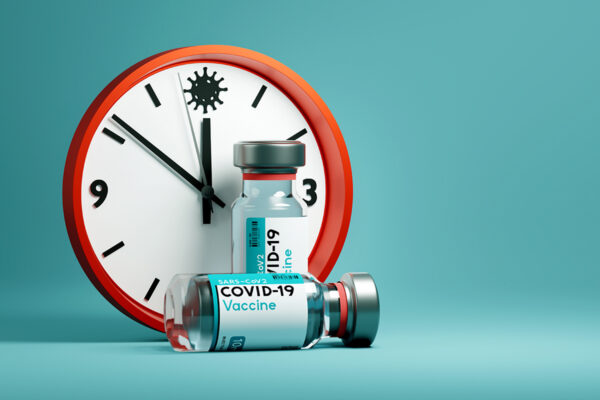New Olin Business School research demonstrates the effectiveness of partisan cues in a COVID-19 vaccination video ad campaign.
A large-scale study to see if politically partisan cues can induce people to get COVID-19 vaccines found that, yes, they can.
The researchers created a video ad campaign — with Fox News clips about Donald Trump supporting vaccinations — and the ad led to an increase in vaccines across numerous counties by a total of more than 100,000.

The study involved creating a 27-second video compilation of Trump’s comments about the vaccine from Fox News interviews. The researchers then presented the video to millions of U.S. YouTube users in October 2021.
Results indicate that the resulting video campaign increased the number of vaccines in each county where the video was shown by 103 on average, multiplied by 1,014 counties. The study did not include any counties where at least 50% of people were already vaccinated. The budget was about $100,000, coming to $1 or less per vaccine.
“The campaign was cost-effective,” said Brad Larsen, an associate professor of economics at Olin Business School and lead author of “Counter-stereotypical messaging and partisan cues: Moving the needle on vaccines in a polarized U.S.,” which was accepted for publication at the journal Science Advances.
The research has more implications for Americans’ health. The partisan divide has spilled over to other vaccines as well, with Republicans now far less likely than Democrats to get flu shots or to view other immunizations positively — a divide that did not exist before the pandemic.
The deepest fault line
The Kaiser Family Foundation estimated that, among the 27% of American adults who remained unvaccinated for COVID in late October 2021, 60% were Republicans, far above their share in the electorate. Although race, ethnicity, income, urbanicity, education and age also were associated with Americans’ decisions to get vaccinated, political partisanship was the deepest fault line, the paper reported.
For their research, the scholars wondered if a remedy for the partisan divide over COVID vaccines might stem from mechanisms like those that created the disparity in the first place: partisan cues. Of course, research already showed that many people form preferences by following cues from their party leaders, a regularity that has grown stronger as the parties have polarized.
They thought that messages publicizing Trump’s support for COVID-19 vaccines—support he did little to advertise after leaving the White House — might inspire the vaccine-hesitant among his supporters to get vaccinated. So, Larsen and co-authors created the public service announcement (PSA) featuring news clips of Trump on Fox News encouraging people to get vaccinated. By using both Trump and Fox — inconsistent messengers about the seriousness of the pandemic — they created a counter-stereotypical message.
The study co-authors are Timothy Ryan and Marc Hetherington from the University of North Carolina at Chapel Hill, Steven Greene from North Carolina State University, Rahsaan Maxwell from New York University and Steven Tadelis from the University of California, Berkeley.
‘A political remedy’
The PSA includes four separate video clips: The first and third are from a Fox 13 News Utah segment recorded on March 16, 2021. The second is from a phone interview between Donald Trump and anchor Maria Bartiromo recorded on the Fox News Channel on the same date. The fourth is from a social media post of Ivanka Trump from the spring of 2021. The researchers hired a video editor to combine the clips and overlay them with a soundtrack.
Knowing that many users might stop the PSA from playing as soon as possible, news of Trump’s endorsement needed to occur immediately, Larsen said. Within the first three seconds of the ad, the Fox 13 Utah anchor says, “Donald Trump is urging all Americans to get the COVID-19 vaccine.”
“It catches people’s attention, and it can change the way they think,” Larsen said. “And that was our hope.”
‘In short, we find that a problem with political origins also has a political remedy.’
He and his colleagues tested the ad through a large randomized controlled trial on YouTube, targeting counties that lagged in vaccine uptake. Overall, a total of 11.6 million ads reached 6 million unique viewers. They then measured the effect of the campaign on county-level vaccination counts in data from the U.S. Centers for Disease Control and Prevention. The total increase in vaccinations after the campaign was 104,036, costing about $1 or less in ad spending per vaccine.
“Given plentiful evidence of small, undetectable effects of public messaging in other settings, these results are encouraging and represent a large return on investment,” the authors write. “The result also highlights an approach to increase vaccinations for a fraction of the cost of other interventions, such as vaccine lotteries or direct payments.
“In short, we find that a problem with political origins also has a political remedy.”


